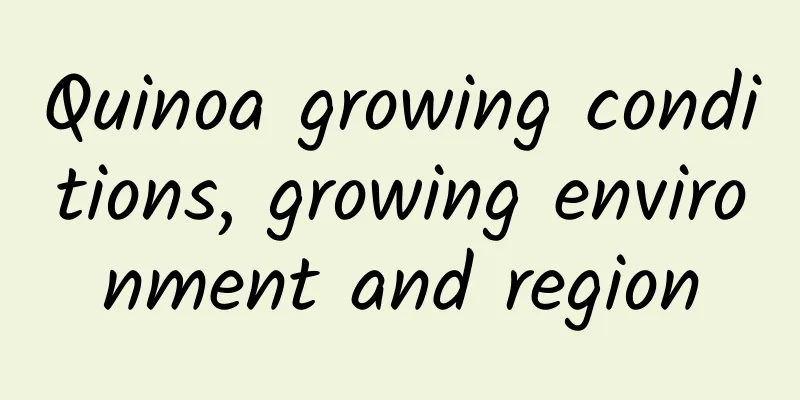Quinoa growing conditions, growing environment and region

Quinoa Growing ConditionsThe growth cycle of quinoa is 90-220 days. Its growth cycle is related to the sowing time. The earlier the sowing time, the longer the growth period. It generally grows in areas above 1,500 meters above sea level. It is not resistant to high temperatures, and the maximum temperature is no higher than 32 degrees. Quinoa Growing ClimateQuinoa prefers a warm and humid growing environment. It can be sown when the temperature is between 15-20 degrees, the soil temperature is above 8 degrees, and the soil moisture is at least equivalent to 3/4 of the field water holding capacity to promote seed germination. Quinoa growing regionsQuinoa is generally distributed in areas above 1,500 meters above sea level. The maximum temperature cannot exceed 32 degrees and the frost-free period is more than 100 days. It was originally distributed in mountainous areas such as Colombia, Ecuador, Peru and other places in the Andes Mountains in South America. Quinoa has strong adaptability to the environment and has a certain degree of cold resistance, drought resistance and salt resistance. It has a wide growth range and is grown from low altitudes to plateaus at around 4,500 meters above sea level. The most suitable altitude is plateaus or mountainous areas at 3,000-4,000 meters above sea level. Quinoa Planting TimeQuinoa is generally planted in spring, specifically in mid-May, when the temperature is high and the air humidity is high, which is suitable for plant growth and the survival rate is very high. Quinoa Planting TipsAfter quinoa seedlings emerge, it is necessary to promptly supplement and thin out the seedlings, and pay attention to removing weeds, improving uniformity, and increasing ventilation and light transmittance. When the height of quinoa is above 50 cm, it is necessary to weed 1-2 times. When planting, apply sufficient base fertilizer, and spray phosphorus fertilizer and trace element fertilizer on the leaves in the middle and late stages of growth, which is effective for flowering and fruiting. |
<<: Requirements of pepper planting conditions for growth environment and climate
>>: How to save seeds from baby pumpkin
Recommend
Cultivation methods and precautions of papaya begonia
1. Methods 1. Soil: It has strong adaptability an...
Maintenance tips for Cleome
Cleome in pots It is not very difficult to plant ...
When is the best time to plant cucumbers?
Cucumber is a common vegetable that can be eaten ...
Be careful not to use the wrong pot when growing flowers. Otherwise, the flowers will not survive no matter what you do. No wonder you are a flower killer!
Long flower pots to prevent root rot In our previ...
What to do if the leaves of the peacock plant are curling
What to do if the leaves of the peacock plant cur...
How to graft loquat
1. Grafting method 1. In February and March, when...
When will the golden marbles bloom and bear fruit?
When does the golden marble bloom? The golden bal...
How to grow Kinokawa succulent
1. Soil This kind of succulent plant generally pr...
How to prune wisteria trees
When to prune wisteria trees Wisteria trees can b...
How many times a year are cucumbers planted?
The growth cycle of cucumber from sowing to matur...
Cultivation methods and precautions of large-leaf gardenia
1. Breeding methods 1. Soil: It is best to use lo...
Cultivation methods and precautions of white rib amaryllis
White rib amaryllis is very easy to grow. It has ...
How to care for Australian fir bonsai?
The Australian fir is an evergreen tree with a be...
How to grow cantaloupe
1. Prepare the soil Prepare a flower pot with a d...
The meaning and symbolism of chrysanthemum
1. Meaning 1. Noble sentiment: It continues to bl...









